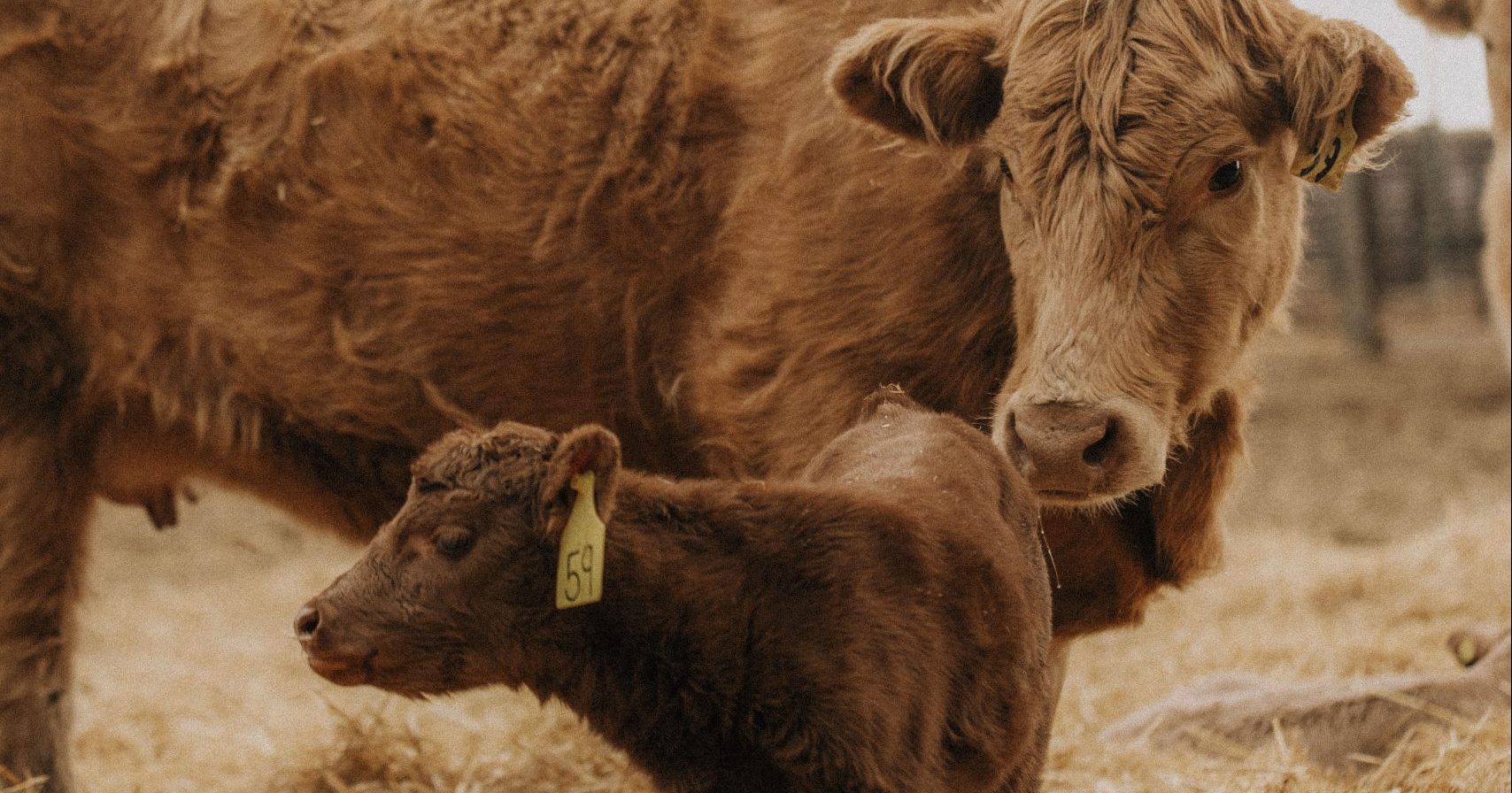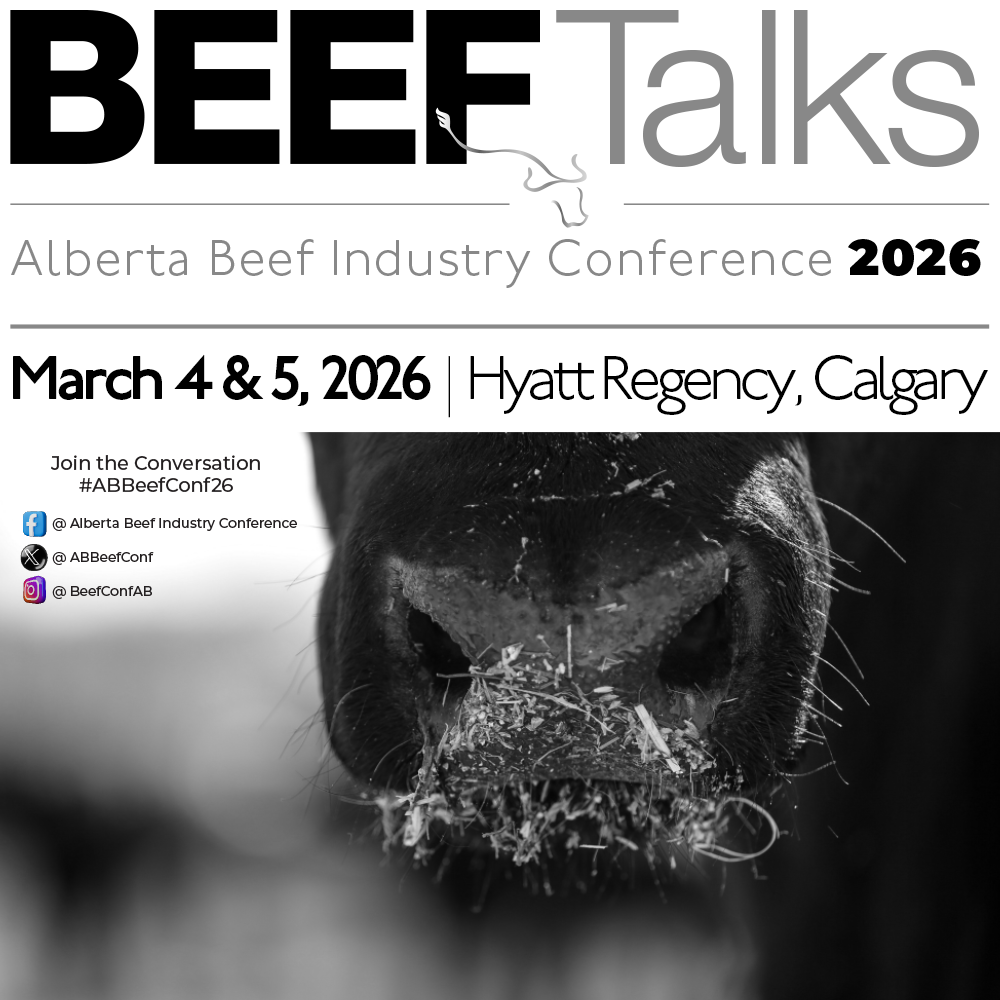AB Direct - Steers
Rail: 492.00-493.50 FOB feedlot (last week)
AB Direct - Heifers
Rail: 492.00-493.50 FOB feedlot (last week)
US Trade- Steers
Rail: 355.00-363.00 (IA, NE) last week
US Trade - Heifers
Rail: 355.00-363.00 (IA, NE) last week
Canadian Dollar
0.19

ABP Research Showcase Highlights | Using energy intake to impact colostrum quality
This is the sixth in a series of articles highlighting a selection of ABP-supported research projects that were featured at our Research Showcase in February 2023. Find the previous articles here.
Winter conditions in Canada don’t always make it easy on beef females about to calve.
Not only do the cold temperatures increase the metabolic energy required in the late gestation period, but their rations are also often less energy dense. This led Koryn Hare, PhD candidate at the University of Guelph, to consider whether these factors cause a glucose deficit in cows prior to calving.

This deficit, Hare explained, has to do with the calf’s development, which requires an estimated 50 to 63 per cent of the cow’s glucose supply in late gestation. Then, just before calving, the synthesis of colostrum lactose places an even greater demand on this supply, creating a glucose imbalance in the cow.
“The theory is that if we can increase her glucose supply, we can increase the amount of substrate that’s available for lactose synthesis, and therein lead to an increase in colostrum yield,” said Hare, referencing studies on dairy females where increased colostrum resulted in a greater lactose concentration in the colostrum.
With this in mind, Hare wanted to study whether altering the energy intake during late gestation would affect the glucose supply imbalance, supporting calf development, and lead to enhanced colostrum production, promoting newborn calf health.
“This led us to our hypothesis that increasing the late gestation metabolizable energy supply would correct any probable deficits in antepartum glucose balance to increase colostrum yield and alter colostrum composition,” she said.
Colostrum yield, quality improve with greater energy intake
Hare and her team conducted this research at the university’s Ontario Beef Research Centre, with 156 Simmental-Angus females. The heifers and cows in the trial were fed one of three rations, which provided around 80, 100, and 120 per cent of the late gestation energy requirements for beef females.
Colostrum composition and yield were measured through samples taken shortly after calving. The colostrum samples were tested for their composition of lactose, fat, protein, and immunoglobulin G (IgG).
What is Immunoglobulin?
Source: Manitoba Agriculture
Colostrum contains high amounts of immunoglobulins, which are also known as antibodies. These are proteins that “identify and destroy disease-causing pathogens in livestock.” The most predominant antibody within colostrum is Immunoglobulin G, or IgG, which “functions to identify and demolish pathogens found within the bloodstream as well as other parts of the body.”
As hypothesized, the study found that colostrum yield increased as the metabolizable energy density of the animal’s diet increased during late gestation. In terms of colostrum composition, greater metabolizable energy intake in late gestation increased the overall amount of nutrients available in the colostrum. More specifically, protein and fat yield increased with greater energy, though it did not affect lactose yield.

“With respect to colostrum IgG concentrations, we see similar results to what’s been seen before in dairy cattle, and we have a decrease in colostrum IgG concentration as for increasing that energy density of the ration,” said Hare.
In terms of colostrum IgG yield, though, this increased as energy density was increased in the cow’s ration.
“The thresholds that are recommended for calf intake for IgG mass at their first feeding are at about 200 grams per litre, and so even at our lowest IgG mass output, we’re still above that threshold,” said Hare.
“Recent data from dairy cattle is indicating that about 25 per cent of the total immunoglobulin that’s produced by the cow is output within that first colostrum milking, so there’s going to be about 75 per cent that comes after that. And if we consider that, we have relatively about 800 to 1,600 grams of IgG that’s going to be available for these calves within the first couple of days of their life.”
To observe calf performance, weights and frame measurements were taken after calving and in the following months, and blood samples were taken a few days after calving to monitor serum IgG and metabolites.
However, no differences were observed between the treatments in terms of calf health, size at calving, growth at two months of age, or weaning weight. Hare explained that this is likely due to the controlled setting of the research centre, in which calves didn’t co-mingle as much as they might in a real-life situation, so the spread of potential pathogens or other challenges to their health were limited.
There were no differences in serum IgG in the calf blood samples, either. “We theorize here that…we hit a threshold from which they couldn’t absorb IgG anymore into their bloodstream,” she said.
“It’s possible that the immunoglobulins that are present have beneficial effects locally within the gastrointestinal tract. They surpass the threshold that’s been recommended for calves for transfer of passive immunity by 12 hours, so they’re at approximately double of what’s been recommended very early on in life, and that’s really relative to the IgG density that’s in the colostrum.”
This study was partially funded by Alberta Beef Producers. To learn about more ABP-supported studies and find fact sheets for completed and in-progress projects, visit our Research and Development webpage.


